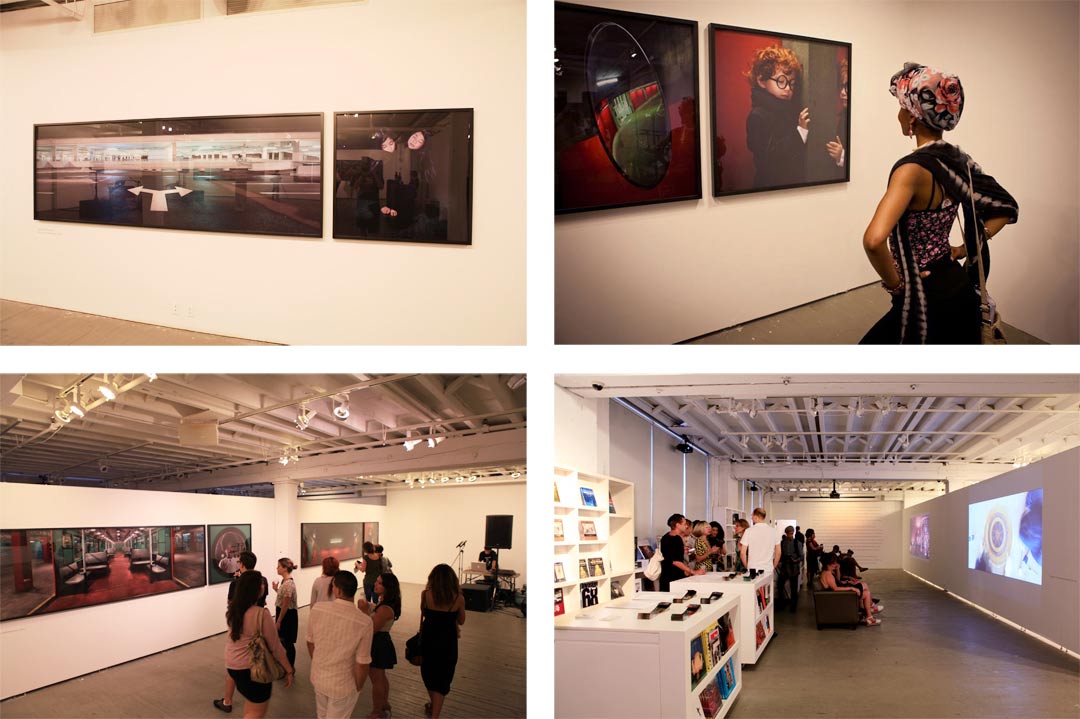By Allison Grant, Curator at the Museum of Photography of Chicago – July 2012
It is a mistake to think of Laetitia Soulier’s sensuously constructed images as fantastic imaginings that merely nod to their deceptions of scale and form. In her work, she uses symmetry, scale, order, and balance to create images that play with perception and turn the familiar into the foreign, but these tricks of the eye really serve to engage us in Soulier’s deeper interest—the subjective experience of reality. Much like Lewis Carroll’s alluring fairytales, Soulier offers up a world where fantasy and reality entwine not only to defy common logic, but also to reveal the constant fluctuation that marks human perception.
Forms also repeat in Palindromes (2008–09), a series of diptychs that pair symmetrical pictures of urban settings with images of identical twins. Here, children and architecture once again stand in for the human psyche, requiring the eye to skip across the picture plane and compare the small details of corresponding forms. As with Soulier’s other works, she finds a duality between our outer and inner worlds, this time using mundane settings and children to create uncanny binary pairings that seem both familiar and alien. Through all of her work, Soulier brings us back to childhood, when our sense of self was most malleable and the boundaries between reality and fantasy easily blurred. Her photographs compress space and time, jarring our adult sense of the world and awakening levels of consciousness that are within us all, lying just beyond our lucid reasoning.
